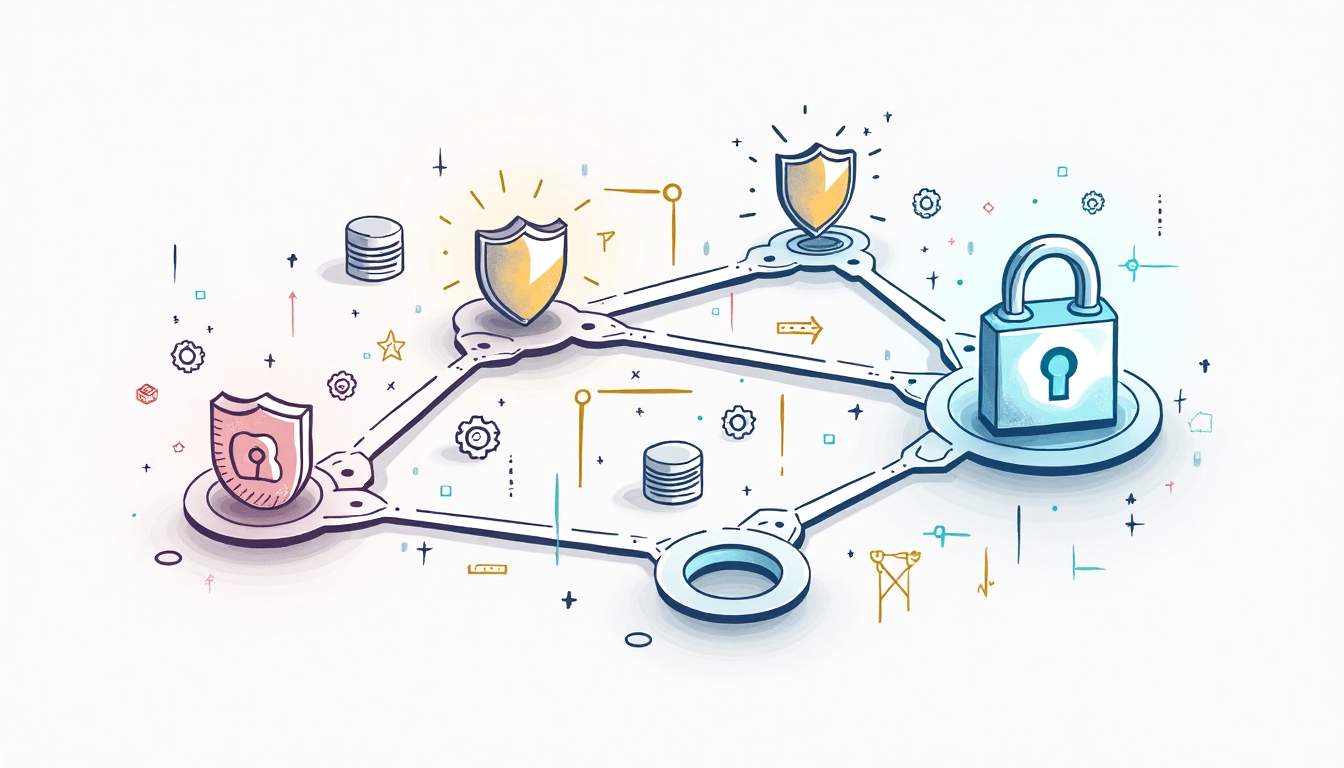N8N Security: Protecting Your Automation Workflows
In today’s fast-paced digital landscape, automation platforms like n8n have become indispensable tools for businesses seeking efficiency and scalability. However, as organizations increasingly rely on automation to handle critical workflows, the importance of securing these processes cannot be overstated. n8n, an open-source workflow automation tool, offers powerful capabilities but also requires a robust security framework to protect sensitive data and maintain operational integrity.
This article delves into the essential aspects of n8n security, providing a comprehensive guide to safeguarding your automation workflows. From assessing security risks to implementing authentication, data protection, network safeguards, monitoring, incident response, and compliance, every facet plays a pivotal role in creating a secure automation environment.
Security Assessment
Before deploying or scaling n8n workflows, conducting a thorough security assessment is a critical first step. This process involves identifying potential vulnerabilities within the automation environment, understanding the data flow, and evaluating the risks associated with each integration point. Since n8n connects with numerous third-party services via APIs, each connection represents a potential attack vector that must be carefully scrutinized.
Security assessments typically start with a detailed inventory of workflows, credentials, and access points. Understanding which workflows handle sensitive information such as personally identifiable information (PII), financial data, or proprietary business intelligence helps prioritize security efforts. Additionally, evaluating the security posture of connected services and ensuring they adhere to best practices is equally important.
Penetration testing and vulnerability scanning tools can be employed to simulate attacks on the n8n environment, revealing weaknesses before malicious actors exploit them. Regularly updating n8n and its dependencies also mitigates risks associated with known software vulnerabilities. By establishing a baseline of security, organizations can make informed decisions about where to allocate resources and how to strengthen their automation defenses.
Moreover, it is essential to implement robust authentication and authorization mechanisms to safeguard workflows. Utilizing OAuth2 for API integrations can provide an additional layer of security, ensuring that only authorized applications and users can access sensitive data. Furthermore, employing role-based access control (RBAC) can help limit user permissions based on their job functions, reducing the risk of internal threats and accidental data exposure.
Another critical aspect of the security assessment is the continuous monitoring of the n8n environment. Implementing logging and alerting systems can help organizations detect unusual activities or potential breaches in real-time. By analyzing logs for anomalies and setting up alerts for suspicious behavior, teams can respond swiftly to potential security incidents, thereby minimizing the impact on operations. Regular training and awareness programs for team members about security best practices can also foster a culture of vigilance, ensuring that everyone plays a part in maintaining a secure automation environment.
Authentication and Authorization
Authentication and authorization form the backbone of any secure system, and n8n is no exception. Authentication verifies the identity of users or systems attempting to access the platform, while authorization determines what actions those authenticated entities are permitted to perform.
n8n supports multiple authentication mechanisms, including OAuth2, API keys, and single sign-on (SSO) integrations with identity providers like LDAP or SAML. Implementing multi-factor authentication (MFA) adds an additional layer of security, significantly reducing the risk of unauthorized access due to compromised credentials. Given the sensitive nature of automation workflows, enforcing strong password policies and frequent credential rotations is advisable.
Authorization controls in n8n can be fine-tuned to limit user permissions based on roles or responsibilities. For example, administrators may have full access to create and modify workflows, while regular users might only execute predefined workflows without editing capabilities. This principle of least privilege minimizes the potential damage from insider threats or compromised accounts by restricting access to only what is necessary for each user’s role.
In addition to these foundational security measures, n8n also allows for the implementation of audit logs, which track user actions and changes made within the system. This feature is crucial for compliance and security monitoring, as it provides a transparent view of who accessed what data and when. Organizations can leverage these logs to identify suspicious activities or to conduct thorough investigations in the event of a security breach, ensuring accountability and traceability throughout the automation process.
Moreover, n8n's flexible architecture supports the integration of third-party security tools, enabling organizations to enhance their security posture further. For instance, integrating with services that provide anomaly detection can help identify unusual patterns of access or usage, triggering alerts for potential security incidents. This proactive approach to security not only protects sensitive workflows but also fosters a culture of security awareness among users, encouraging them to adhere to best practices in their daily operations.
Data Protection
Data protection is paramount when automating workflows that process confidential or sensitive information. n8n workflows often handle data in transit between various services, making it essential to safeguard data both at rest and during transmission.
Encryption is a fundamental tool in data protection. n8n supports encrypting sensitive data stored within its database, such as API credentials and workflow parameters. Utilizing strong encryption standards like AES-256 ensures that even if data storage is compromised, the information remains unreadable to unauthorized parties.
When data moves between n8n and external services, Transport Layer Security (TLS) protocols should be enforced to prevent interception or tampering. Additionally, masking or redacting sensitive information within logs and user interfaces helps prevent accidental exposure. For organizations handling regulated data, implementing data classification and applying appropriate controls based on sensitivity levels further strengthens protection.
Moreover, regular audits and assessments of data protection measures are crucial to ensure compliance with evolving regulations and standards. Organizations should conduct vulnerability assessments and penetration testing to identify potential weaknesses in their workflows. By proactively addressing these vulnerabilities, businesses can mitigate risks before they become significant threats. Furthermore, establishing a culture of data protection awareness among employees through training and workshops can empower teams to recognize and respond to data security challenges effectively.
Another critical aspect of data protection is the implementation of access controls and authentication mechanisms. Role-based access control (RBAC) allows organizations to limit data access based on user roles, ensuring that only authorized personnel can view or manipulate sensitive information. Multi-factor authentication (MFA) adds an additional layer of security by requiring users to provide multiple forms of verification before accessing critical systems. These measures not only enhance security but also foster accountability within the organization, as users are aware that their actions are being monitored and logged.
Network Security
Network security measures are crucial to protecting the infrastructure that hosts n8n and the communication channels it uses. Since n8n can be deployed on-premises or in the cloud, securing the network environment requires a multi-layered approach.
Firewalls and virtual private networks (VPNs) can restrict access to the n8n instance, allowing only trusted IP addresses or users to connect. Network segmentation separates n8n from other critical systems, reducing the attack surface and containing potential breaches. Moreover, configuring secure ports and disabling unnecessary services minimizes vulnerabilities.
For cloud deployments, leveraging security groups, identity and access management (IAM) roles, and encryption for data stored in cloud storage enhances protection. Regularly updating network devices and applying patches promptly prevents exploitation of known weaknesses. Monitoring network traffic for anomalies can also help detect suspicious activities early.
Monitoring and Logging
Continuous monitoring and comprehensive logging are vital components of an effective security strategy for n8n workflows. They provide visibility into system activity, enabling rapid detection and investigation of security incidents.
n8n generates logs that capture workflow executions, errors, and user actions. Integrating these logs with centralized logging platforms or security information and event management (SIEM) systems can facilitate real-time analysis and alerting. Monitoring unusual patterns, such as repeated failed login attempts or unexpected workflow modifications, helps identify potential threats before they escalate.
Additionally, audit trails documenting who accessed or changed workflows are essential for accountability and forensic investigations. Establishing retention policies ensures that logs are preserved for an appropriate duration to comply with regulatory requirements and support incident response efforts.
Incident Response
Despite the best preventive measures, security incidents can still occur. Preparing an incident response plan tailored to the n8n environment is crucial for minimizing damage and restoring normal operations swiftly.
An effective incident response plan outlines roles and responsibilities, communication protocols, and step-by-step procedures for identifying, containing, eradicating, and recovering from security breaches. Regular drills and updates to the plan ensure readiness and adaptability to evolving threats.
In the context of n8n, incident response may involve isolating compromised workflows, revoking affected credentials, and conducting root cause analyses to prevent recurrence. Collaboration between security teams, developers, and stakeholders is vital to address vulnerabilities and maintain trust in the automation platform.
Compliance Considerations
Many organizations using n8n must adhere to industry-specific regulations and standards that govern data privacy and security. Compliance considerations influence how automation workflows are designed, implemented, and maintained.
Regulations such as the General Data Protection Regulation (GDPR), Health Insurance Portability and Accountability Act (HIPAA), and Payment Card Industry Data Security Standard (PCI DSS) impose strict requirements on data handling, access controls, and breach notification. Ensuring that n8n workflows comply with these mandates involves implementing appropriate data protection measures, maintaining detailed documentation, and conducting regular audits.
Moreover, compliance frameworks often require organizations to demonstrate due diligence in securing their automation environments. This includes maintaining up-to-date security policies, training personnel, and leveraging tools that support compliance reporting. By integrating compliance into the security strategy, businesses can mitigate legal risks and enhance their reputation with customers and partners.






